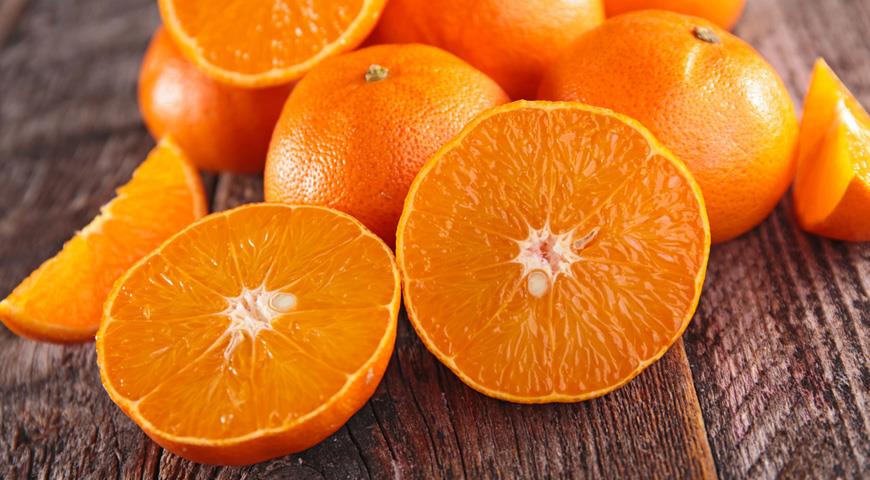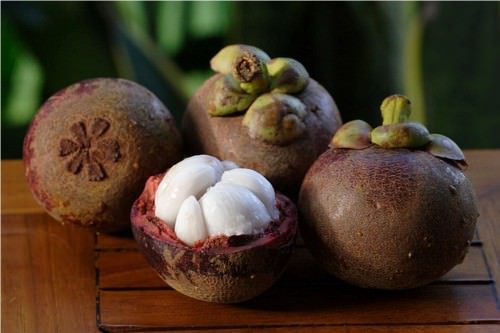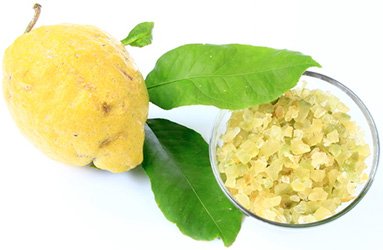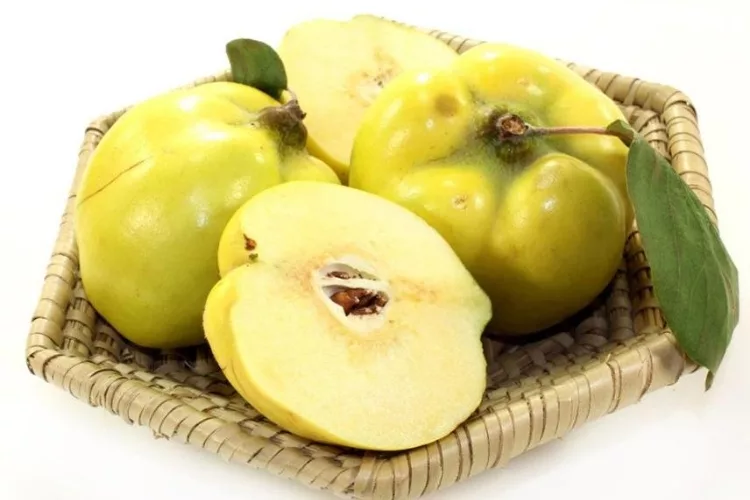16 Absorbing Facts About Papaya
by Editorial Staff
The second most famous tree with large edible fruits is widespread in tropical countries. Botanists, who consider it a treelike herbaceous plant, called it Carica papaya, but more often the tree, like its fruits, is simply called "papaya."
- Bestseller No. 1
Contents
Facts About Papaya

- Ten plants with bare trunks, decorated with openwork umbrella crowns of large leaves, are densely hung with yellow-green fruits reaching 35 centimeters in length. In taste and appearance, the fruits resemble a melon, hence the second name - a melon tree.
- More than 1000 varieties of papaya are known today. Its delicious fruits are often used in cooking, turning into sauces, salads, pastries, and drinks.
- The papaya was nicknamed "the breadfruit" because, when baked, the fruits emit the aroma of fresh bread.
- The pinkish pulp of the papaya is fragrant and slightly sour. Papaya is eaten raw, used in salads, and made into preserves, jams, drinks, marinades. Papaya juice is used in the production of ice cream. It is enough to add a few drops of juice to the broth, and the toughest meat becomes soft.
- Papaya is also a valuable medicinal plant. The juice of its leaves and unripe fruits contains the enzyme papain, which has an effect similar to the enzymes in gastric juice. The pulp improves digestion, is used to treat ulcers and other diseases of the stomach and intestines. The fruits of the melon tree quickly restore the strength of people exhausted by the disease, help the growth of living tissues, and heal wounds.
- There are also many useful substances in the stem, bark, leaves, and shell of the green fruit. Papaya is used not only in medicine but also in technology. Latex is obtained from the unripe papaya fruit. To do this, make from two to four circular cuts on them and collect the flowing juice in jars suspended from the fruit.
- Papaya is especially widespread on the islands of Oceania. But wherever it is found in Central America, Africa, India, and Australia, it is already a cultivated plant. In the wild, papaya is found only in the mountain forests of Colombia and Ecuador.
- Papaya grows quickly, for more convenient harvesting of fruits, the growth of trees is limited to a height of 3-4 s using special techniques.
- The pungent papaya seeds are an excellent substitute for black pepper. Some Asians even eat young papaya shoots.
- The health benefits of papaya may be worth a separate medical brochure. Firstly, papaya contains proteins, carbohydrates, fiber, vitamins B, A, C, D, as well as potassium, phosphorus, iron, calcium, sodium (only one fruit contains three daily norms of vitamin C). Secondly, it is one of the lowest-calorie fruits - there are only 39 calories in 100 grams of papaya.
- Papaya is recommended for both pregnant women and babies - it is harmless, easy to digest, and almost never causes allergies.
- For those who prefer juices to fruit, the news is good too. Papaya juice helps in treating insect bites and relieving pain from burns - and it is often used for skin diseases. And in tropical countries, doctors use papaya juice even in the treatment of spine and stomach diseases.
- Papaya fruits usually vary in shape and size. Ripe fruit should have a reddish-orange peel, and the flesh should be firm to the touch and sweet in taste. Unripe fruit should be placed in a dry, dark place and left to ripen. Ripe papaya is stored for no more than a week - and it is better to keep it in the refrigerator. Before serving the papaya on the table, you need to peel it and remove the seeds from the core of the fruit.
- Papaya makes excellent salads - it goes well with vegetables, seafood, and hard cheeses. Sweet fruits are also an indispensable ingredient in Asian dishes famous for their sweet and sour combinations.
- If you eat too much, papaya (like carrots) can lead to carotenemia - yellowing of the feet and palms.
- A small papaya contains about 300% of the recommended daily amount of vitamin C.
 Also Like
Also Like

Clementines are a hybrid of an orange and a mandarin, and this variety was bred by the French priest and breeder Father Clement, after whom the exotic fruit got its name. Externally, clementines are similar to tangerines with one difference – there are pr...

10 Interesting Facts About Arugulas
Indau, eruka, rocket, sowing caterpillar – this plant has many names, but whatever you call it less useful for health, it does not become from this. Arugula has a pleasantly bitter flavor that can add a spicy taste to any dish. Many who have tried it once...

10 Interesting Facts About Asparagus
All over the world, spring is considered the season of asparagus, when the first young juicy shoots appear from the ground. In our country, you don’t even have to look for local asparagus in the markets – you need to grow it (and it doesn’t grow in one ye...

10 Interesting Facts About Broccoli
There is more vitamin C in broccoli cabbage than in lemon, A – almost as much as in carrots, and the rest of the trace elements are certainly not less than in related vegetables of the cabbage family. It should be treated with caution by those who have in...

10 Interesting Facts About Cauliflowers
Cauliflower is superior to all other varieties in taste and nutritional content. What do you know about Cauliflowers? We will tell you 10 interesting facts about him, and if you have something to add, be sure to leave your comment under this post! Caulifl...

10 Interesting Facts About Dills
Many people actively use dill when preparing a wide variety of dishes; this seasoning is considered truly universal. What do you know about Dills? We will tell you 10 interesting facts about him, and if you have something to add, be sure to leave your com...

10 Interesting Facts About Fennels
Not the most frequent guest in our kitchens, but his every appearance should be noted. What do you know about Fennels? We will tell you 10 interesting facts about him, and if you have something to add, be sure to leave your comment under this post! The ho...

10 Interesting Facts About Garlic
Many doctors recommend eating garlic, in the absence of contraindications, of course. This is an extremely useful product, notable for the fact that when cooked or dried, it retains a significant proportion of useful substances. What do you know about Gar...

10 Interesting Facts About Greens
We know vegetables and greens are good for you. But what exactly is their strength and why are they so important in the daily diet? After examining the opinions of people leading a healthy lifestyle, we are a selection of 10 interesting facts. What do you...

10 Interesting Facts About Lettuce
Lettuce is known all over the world and has been actively used since the 20th century. People can grow lettuce on their own to consume its leaves or stump. It should be noted that lettuce varieties such as Roman are produced mainly in Europe (in the Medit...

10 Interesting Facts About Parsley
Even the usual seasoning can harbor a lot of unusual things. What do you know about Parsley? We will tell you 10 interesting facts about him, and if you have something to add, be sure to leave your comment under this post! Did you know that there are curl...

10 Interesting Facts About Pumpkins
Orange, juicy, bright, tasty, useful! Pumpkin is a real symbol of autumn. And what do you know about pumpkins? We will tell you 10 interesting facts about pumpkins, and if you have something to add, be sure to leave a comment under this post! In fact, the...

12 Interesting Facts About Daikon
Due to the high content of vitamins, daikon strengthens the immune system, and its phytoncides kill microbes. Daikon removes excess fluid from the body, cleanses the liver and kidneys, stimulates the stomach and intestines, and is even able to dissolve ga...

12 Interesting Facts About Mangosteen
We have already written about dragon fruit – one of the most popular fruits in Southeast Asia, especially in Thailand. We decided to continue the series of notes dedicated to fruits, which can be seen in abundance on Thai food stalls. The turn of mangoste...

12 Interesting Facts About Mustard
Mustard is an annual plant that grows up to 60 cm in height. The bright yellow flowers form seed pods, each containing about 6 seeds. What do you know about Mustard? We will tell you 12 interesting facts about him, and if you have something to add, be sur...

Citron is a rare fruit that belongs to the citrus family. At the moment, it grows only in some rather limited areas. Theophrastus, Virgil, Martial also spoke about this fruit, it is also mentioned in the Bible. The history of the origin of this citrus tre...

Guava is an evergreen plant of the Myrtle family, which includes about 100 species. This plant is native to the tropics of South America, but today it is grown in other parts of the world. The guava fruit is widely used for making desserts. Guava fruits a...

13 Interesting Facts About Beans
Many dishes contain beans, and in some countries, they are an integral part of the national cuisine, for example, in Mexico. What do you know about Beans? We will tell you 13 interesting facts about him, and if you have something to add, be sure to leave ...

14 Fascinating Facts About Chaenomeles
Japanese quince, or Japanese Chaenomeles, is a representative of the Plum subfamily, the Pink family, of the order Rosaceae. Japanese quince is small in height (grows from 1.5 to 4 m) with falling leaves (rarely semi-evergreen) bush or low tree, which is ...

14 Interesting Facts About Basil
Basil is considered an Indian spice and is used as a condiment in many cuisines around the world. What do you know about basil? We will tell you 14 interesting facts about him, and if you have something to add, be sure to leave your comment under this pos...
Comments for "16 Absorbing Facts About Papaya"
 |
 |
 |
 |
Get FREE Recipe Gifts now. Or latest free cooktops from our best collections.
Disable Ad block to get all the secrets. Once done, hit any button below
 |
 |
 |
 |
